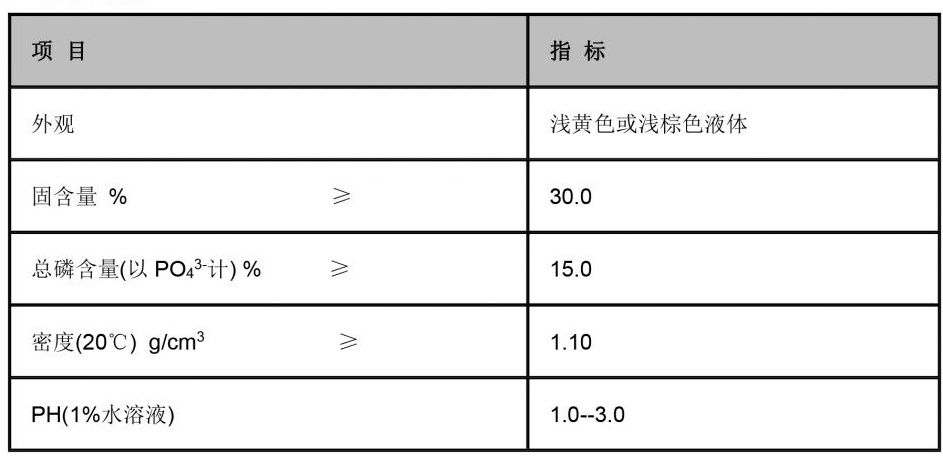amino tri methylene phosphonic acid
Amino Tri Methylene Phosphonic Acid An Overview of Its Structure, Properties, and Applications
Amino tri methylene phosphonic acid, often abbreviated as ATMP, is a phosphonic acid derivative that has gained significant attention in recent years due to its diverse applications in various fields, including water treatment, agriculture, and polymer chemistry. This compound exhibits unique chemical properties that make it valuable in both industrial and research settings.
Chemical Structure and Properties
ATMP has a distinctive molecular structure characterized by three methylene groups (-CH2-) linking an amino group (-NH2) to a phosphonic acid moiety (-PO3H2). The presence of the amino group contributes to its chelating ability, allowing ATMP to form stable complexes with metal ions. This structural feature is crucial for its effectiveness in various applications, particularly in sequestering calcium and other divalent metals that are often found in water systems.
The phosphonic acid functional group is responsible for the compound's acidic properties, which become significant when ATMP is used in different pH environments. This versatility allows ATMP to perform well under both acidic and neutral conditions, making it an excellent choice for several applications. Additionally, ATMP exhibits good thermal stability, ensuring that it remains effective even under elevated temperatures commonly encountered in industrial processes.
Applications of Amino Tri Methylene Phosphonic Acid
1. Water Treatment One of the primary uses of ATMP is in water treatment systems, where it functions as a scale inhibitor. Scale formation due to calcium carbonate and other mineral deposits can lead to significant operational challenges, including reduced efficiency and increased maintenance costs. By chelating calcium ions, ATMP effectively prevents the precipitation of scales, thus extending the lifespan of equipment and improving overall system efficiency.
amino tri methylene phosphonic acid

2. Detergents and Household Cleaners ATMP is also used in the formulation of detergents and cleaning agents. Its chelating properties help to enhance the efficacy of these products by binding to metal ions that can interfere with the cleaning process. As a result, ATMP improves the performance of detergents, making them more effective in removing dirt and stains.
3. Agricultural Applications In agriculture, ATMP is utilized as a soil conditioner and fertilizer additive. By forming stable complexes with micronutrients such as iron and manganese, it enhances the availability of these essential nutrients to plants. This action not only promotes healthier plant growth but also increases crop yields, making ATMP a valuable component in sustainable farming practices.
4. Polymer Chemistry In the field of polymer chemistry, ATMP is employed as a chain transfer agent and stabilizer in the production of various polymers. Its ability to interact with metal ions aids in controlling polymerization processes, leading to products with improved properties. This application highlights ATMP's versatility and its role as an important additive in innovative materials development.
Environmental Impact and Safety
As with any chemical compound, understanding the environmental impact and safety profile of ATMP is essential. While ATMP is generally considered to be low in toxicity and biodegradable, its use in large quantities, particularly in water systems, requires careful management. Regulatory guidelines are in place to ensure that it is used responsibly, minimizing potential risks to aquatic ecosystems.
Conclusion
Amino tri methylene phosphonic acid is a multifaceted compound with significant industrial relevance. Its unique properties, including chelation, scale inhibition, and nutrient enhancement, make it a preferred choice in a variety of applications ranging from water treatment to agriculture and polymer production. As research continues to explore new uses and formulations, ATMP is likely to remain an essential chemical in addressing contemporary challenges in technology, sustainability, and environmental stewardship.
-
lk-319-special-scale-and-corrosion-inhibitor-for-steel-plants-advanced-solutions-for-industrial-water-systemsNewsAug.22,2025
-
flocculant-water-treatment-essential-chemical-solutions-for-purification-processesNewsAug.22,2025
-
isothiazolinones-versatile-microbial-control-agents-for-industrial-and-consumer-applicationsNewsAug.22,2025
-
scale-inhibitor-key-solutions-for-water-system-scale-preventionNewsAug.22,2025
-
organophosphonates-versatile-scale-inhibitors-for-industrial-water-systemsNewsAug.22,2025
-
scale-and-corrosion-inhibitor-essential-chemical-solutions-for-water-system-maintenanceNewsAug.22,2025





